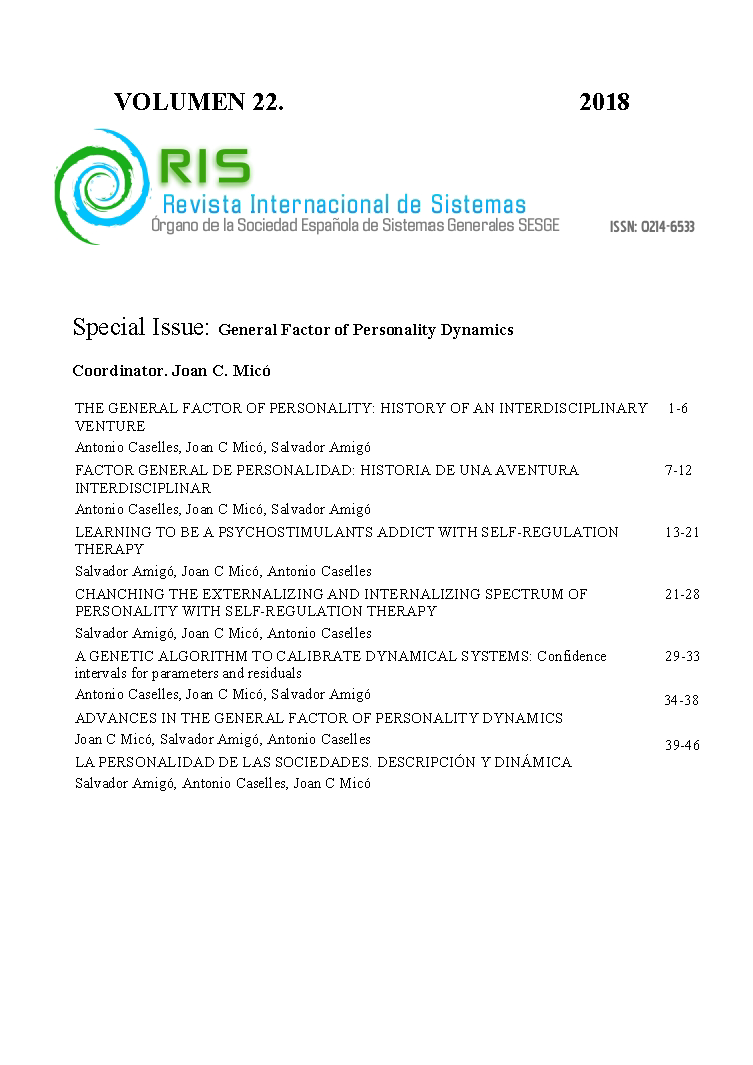CHANCHING THE EXTERNALIZING AND INTERNALIZING SPECTRUM OF PERSONALITY WITH SELF-REGULATION THERAPY
DOI:
https://doi.org/10.7203/RIS.22.1.11487 Resumen
Resumen
This article presents an integrator model of changes in the externalizing and internalizing factors of personality grouped in the General Factor of Personality (GFP), based on the Unique Trait Personality Theory (UTPT) [1]. This theory proposes that a continuum exists between personality and psychopathology, as well as the existence of a GFP that occupies the apex of the hierarchy of personality, and extends from an impulsiveness-and-aggressiveness pole (externalizing spectrum) to an anxiety-and-introversion pole (internalizing spectrum). With an experimental intra-group design, 30 regular users of stimulant drugs (cocaine and amphetamine) used the Self-Regulation Therapy (SRT). The SRT is a psychological procedure based on classic conditioning and suggestion used to experience a relaxation effect after the first session, and a stimulation effect during the second session. This stimulation is achieved by reproducing, by the SRT, the sensations produced by stimulant drugs. Effects were recorded on format-state scales of personality adjectives and activation, which represented both externalizing and internalizing factors. The results showed that both relaxation and stimulation, by imitating the effects of drugs, brought about short-term changes in both the GFP, and the externalizing and internalizing factors, and also in the predicted direction, i.e., changes in global personality.
Descargas
Publicado
Número
Sección
Licencia
Los autores que publican en esta revista están de acuerdo con los siguientes términos:
- Los autores conservan los derechos de autor y garantizan a la revista el derecho de ser la primera publicación del trabajo al igual que licenciado bajo una Creative Commons Attribution License que permite a otros compartir el trabajo con un reconocimiento de la autoría del trabajo y la publicación inicial en esta revista.
- Los autores pueden establecer por separado acuerdos adicionales para la distribución no exclusiva de la versión de la obra publicada en la revista (por ejemplo, situarlo en un repositorio institucional o publicarlo en un libro), con un reconocimiento de su publicación inicial en esta revista.
- Se permite y se anima a los autores a difundir sus trabajos electrónicamente (por ejemplo, en repositorios institucionales o en su propio sitio web) antes y durante el proceso de envío, ya que puede dar lugar a intercambios productivos, así como a una citación más temprana y mayor de los trabajos publicados (Véase The Effect of Open Access) (en inglés).

